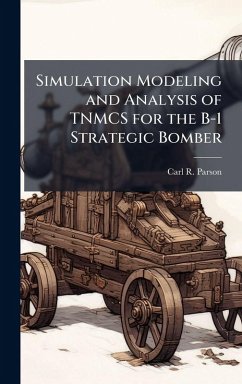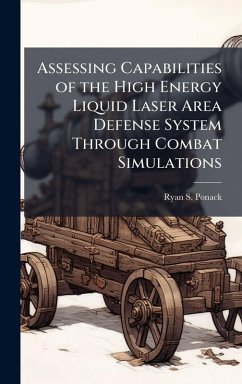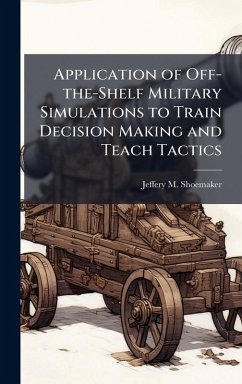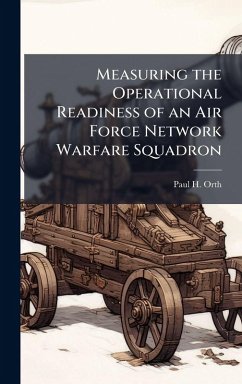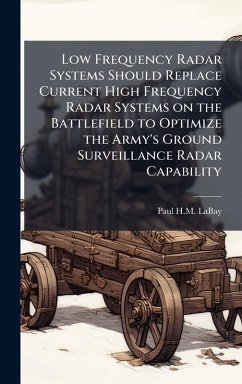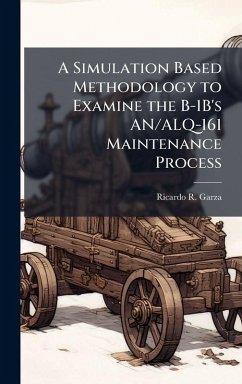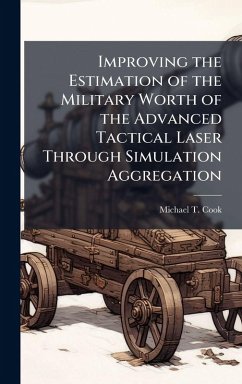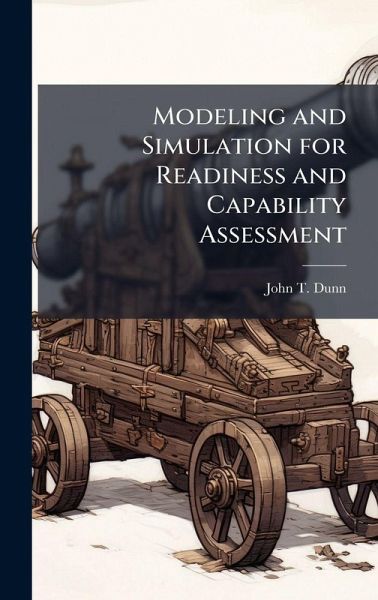
Modeling and Simulation for Readiness and Capability Assessment
Versandkostenfrei!
Versandfertig in über 4 Wochen
25,99 €
inkl. MwSt.
Weitere Ausgaben:

PAYBACK Punkte
13 °P sammeln!
The ability to assess military readiness and capability has been a problem for the Department of Defense, the Congress and military commanders. As recently as the Gulf War readiness reported by some units deploying to the Gulf was, in the words of the General Accounting Office, inflated and unreliable. Inflated and unreliable readiness reporting is a problem for the Department of Defense because it affects budget decisions and long range planning. It is a problem for the Congress because cost versus capability trade-offs are not articulated well. It is a problem for commanders who must depend ...
The ability to assess military readiness and capability has been a problem for the Department of Defense, the Congress and military commanders. As recently as the Gulf War readiness reported by some units deploying to the Gulf was, in the words of the General Accounting Office, inflated and unreliable. Inflated and unreliable readiness reporting is a problem for the Department of Defense because it affects budget decisions and long range planning. It is a problem for the Congress because cost versus capability trade-offs are not articulated well. It is a problem for commanders who must depend on these forces in time of war or contingency. The problem exists because there has been no satisfactory objective means of objectively measuring readiness and capability. Objective methods of assessment have relied primarily upon input or resource based measurement tools. Since these provided only partial measures, subjective input was also required and often contradicted the objective data. Even worse, actual capability was sometimes not reflected by either the objective or subjective assessment. Advances in information technology along with the accompanying information explosion have made the use of modeling and simulation for readiness and capability assessment a viable method of assessing not only individual units but entire theaters of operation. These advances will allow the Department of Defense to compare force capability between different units based upon outcome oriented analysis. The ability to compare assessment results from year to year will help the Congress to understand what is purchased with the defense dollar and will allow peacetime exploration of unit and force cost versus readiness and capability tradeoffs. These same advances will allow the commander to objectively explore alternative force mixtures and courses of action prior to committing them with the added advantage that the same information and technology can provide a further step toward achieving This work has been selected by scholars as being culturally important, and is part of the knowledge base of civilization as we know it. This work was reproduced from the original artifact, and remains as true to the original work as possible. Therefore, you will see the original copyright references, library stamps (as most of these works have been housed in our most important libraries around the world), and other notations in the work. This work is in the public domain in the United States of America, and possibly other nations. Within the United States, you may freely copy and distribute this work, as no entity (individual or corporate) has a copyright on the body of the work. As a reproduction of a historical artifact, this work may contain missing or blurred pages, poor pictures, errant marks, etc. Scholars believe, and we concur, that this work is important enough to be preserved, reproduced, and made generally available to the public. We appreciate your support of the preservation process, and thank you for being an important part of keeping this knowledge alive and relevant.



